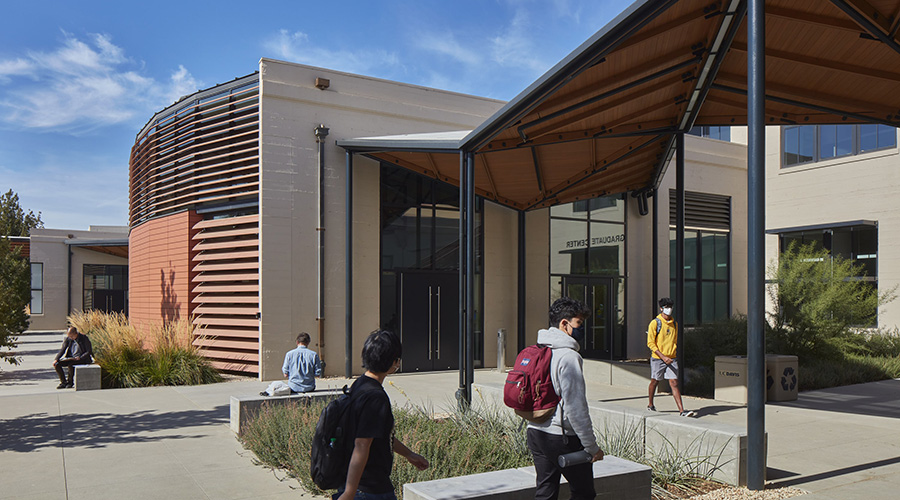Abandoned Schools Offer Opportunity For Reuse
Schools are long-lived facilities intrinsically woven into the heart of their communities and carry symbolic significance like no other public facility, and some of those qualities make them well suited to reuse. "There are many facets within a physical plant that meet the needs of the community," Platenberg says. The cafeteria, auditorium, meeting spaces, and outdoor play spaces can all continue to serve the community in some capacity. Some level of continued use also helps to best-position the facility for re-opening. For example, at one of Platenberg's closed facilities, the county decided to let the community continue to use the sports fields and gym, which maintained a skeletal maintenance presence at the facility. When a need arose for an early childhood education facility, the resources were already in place to make it easier to fully reopen the facility for that purpose.
Many districts first make their vacant facilities available to any local government agencies that might need space, often at advantageous pricing. Milwaukee Public Schools, for example, sold one vacant school back to the city for $1, and they in turn made it into a community health center. One out-of-the-box strategy Milwaukee Public Schools employed was partnering with the city to convert two parcels of surplus land into subdivisions. The city helped them with rezoning the land, and the school district paid the city to install the necessary infrastructure and then sold the lots as would any developer. In the end, the project netted MPS $1.8 million, McMilin says.
In Detroit, if schools are advantageously located in appropriate zoning areas and next to thoroughfares, Adams says, the district has been tearing down facilities and selling off the lots. Unfortunately, most of the more than 100 vacant holdings are not situated in favorable zoning areas for such a strategy to be a large-scale solution.
A key strategy for making a closed school a viable candidate for reuse is properly maintaining and securing the facility while it is not being actively used. It is important for facility managers with facilities that are facing closure, or have been mothballed, to look at the facility from the perspective of the future owner. They should ask themselves: "How would I want to find this building if I became responsible for it?" Herman says. If there are known issues, such as a roof leak, these should be remediated as best as possible to stem further decay before a new owner takes over. "Don't do more harm by not shutting down the property properly."
When the school district does not have the proper resources to continue maintenance, much less vigilance, over a facility, reaching out proactively to the community to create partnerships can go a long way. "It's really about the partnerships that have to be formed across community groups, philanthropy, and the building owner to build support for the building," says Virginia Stanard, director of urban design at the Detroit Collaborative Design Center, which was brought in after the vandalism to help plan the reuse and restoration strategy for Vetal. "It's all about the partnerships that you have to leverage to keep these buildings going."
Activating the property, as she says, is important so people know there is continued life with the facility. Using signage, hosting neighborhood events on the grounds even if the building is not usable, have been key to the Vetal project to show there are eyes on the building, she says.
In the end, these are community facilities, says Platenberg. "The last thing you want to do is keep a physical plant that becomes a blight on the community, creates a law enforcement problem, and detracts from the property values by its deterioration."
Related Topics:














